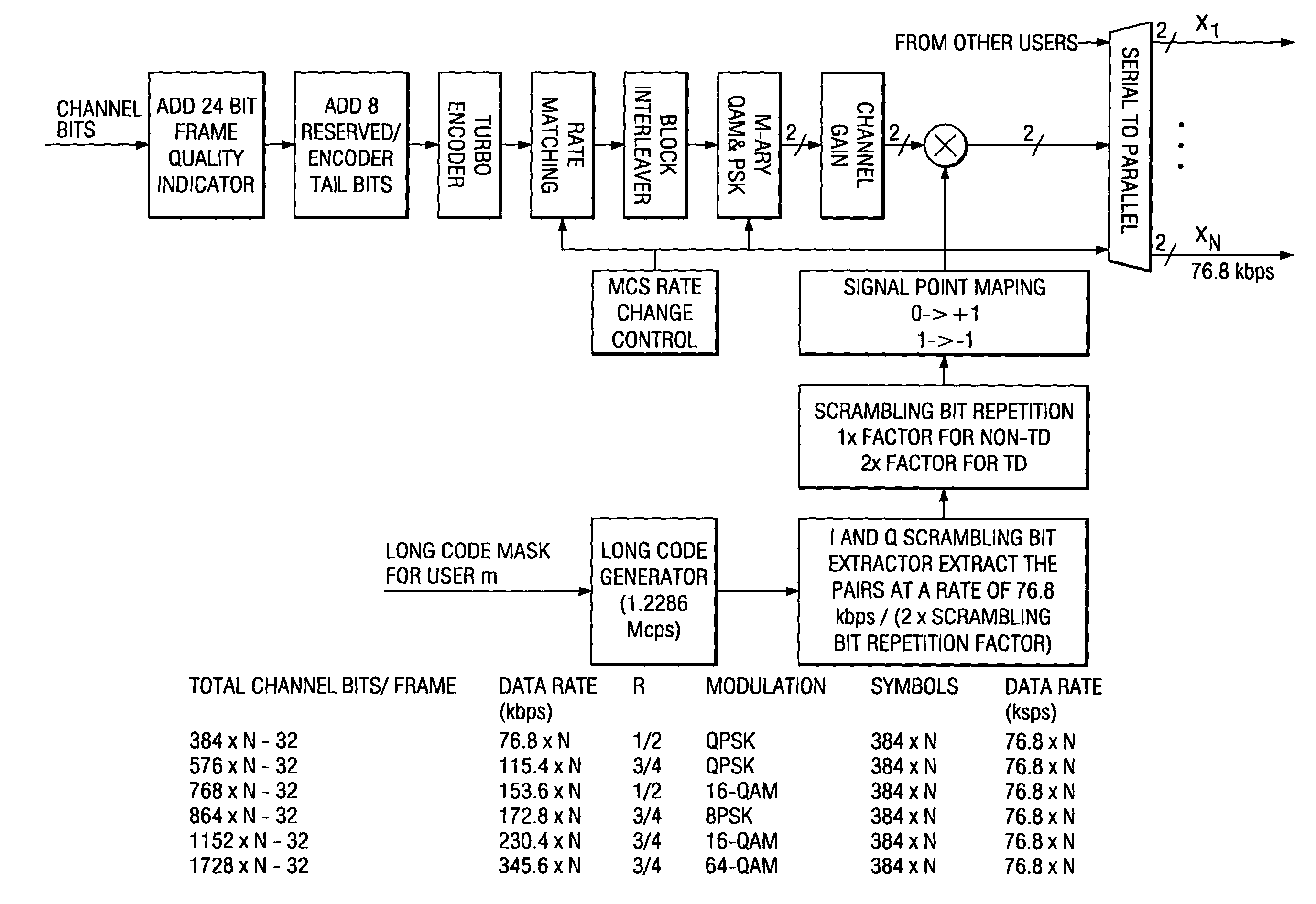Method of rate matching for link adaptation and code space management
a code space management and rate matching technology, applied in the field of wireless data communication, can solve the problems of h-arq less efficient, certain inefficiency in link adaptation, ambiguity in walsh channel alignment between the transmitter and the receiver, etc., and achieve the effect of reducing the constraints on the allocation of walsh codes
- Summary
- Abstract
- Description
- Claims
- Application Information
AI Technical Summary
Benefits of technology
Problems solved by technology
Method used
Image
Examples
Embodiment Construction
[0026]FIG. 1 is a block diagram illustrating a flexible modulation and coding scheme (MCS) 10 associated with partial Chase combining and / or incremental redundancy (IR). To reduce constraints on the data format for the initial transmission and retransmissions, such as MCS, number of Walsh codes, frame duration etc., a “rate matching” block 12 is implemented between the Turbo encoder 14 and block interleaver 16 on the forward link transmitter. In the initial transmission, the Turbo encoded symbols are block interleaved without any puncturing or repeating (i.e. puncture / repeat factor is set to 1). Note that there can be puncturing before the block interleaver on the Turbo encoded data. The coded symbols are also stored in the memory 18 for possible re-transmissions. In the re-transmission, the BTS first determines the number of Walsh codes available for this user and MCS level according to the C / I feedback values from the MS. Then the stored coded symbols are punctured or repeated acc...
PUM
 Login to View More
Login to View More Abstract
Description
Claims
Application Information
 Login to View More
Login to View More - R&D
- Intellectual Property
- Life Sciences
- Materials
- Tech Scout
- Unparalleled Data Quality
- Higher Quality Content
- 60% Fewer Hallucinations
Browse by: Latest US Patents, China's latest patents, Technical Efficacy Thesaurus, Application Domain, Technology Topic, Popular Technical Reports.
© 2025 PatSnap. All rights reserved.Legal|Privacy policy|Modern Slavery Act Transparency Statement|Sitemap|About US| Contact US: help@patsnap.com



